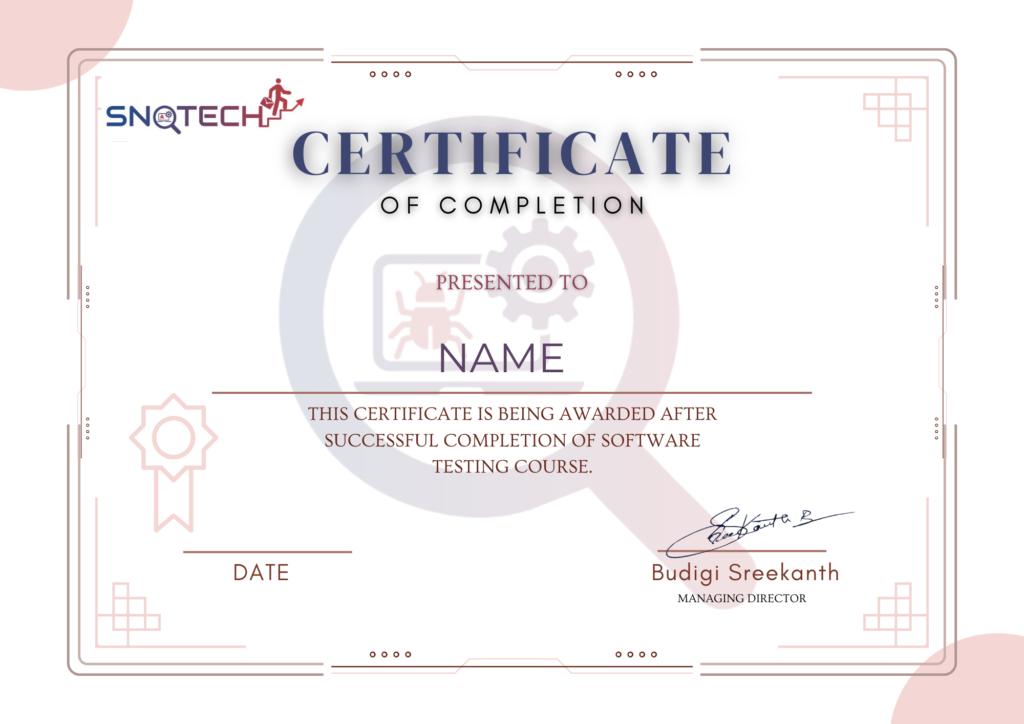Discover Your Future in AI Software Testing UI-Full Stack with SNQ Tech
Are you passionate about technology and eager to dive into the world of software quality assurance? Look no further! Our comprehensive three-month Software Testing Program is designed to equip you with the skills and knowledge needed to excel in the IT industry.
- Experienced Mentors
- Dedicated to Success
- Certificate of completion
- Accessible & Supportive




